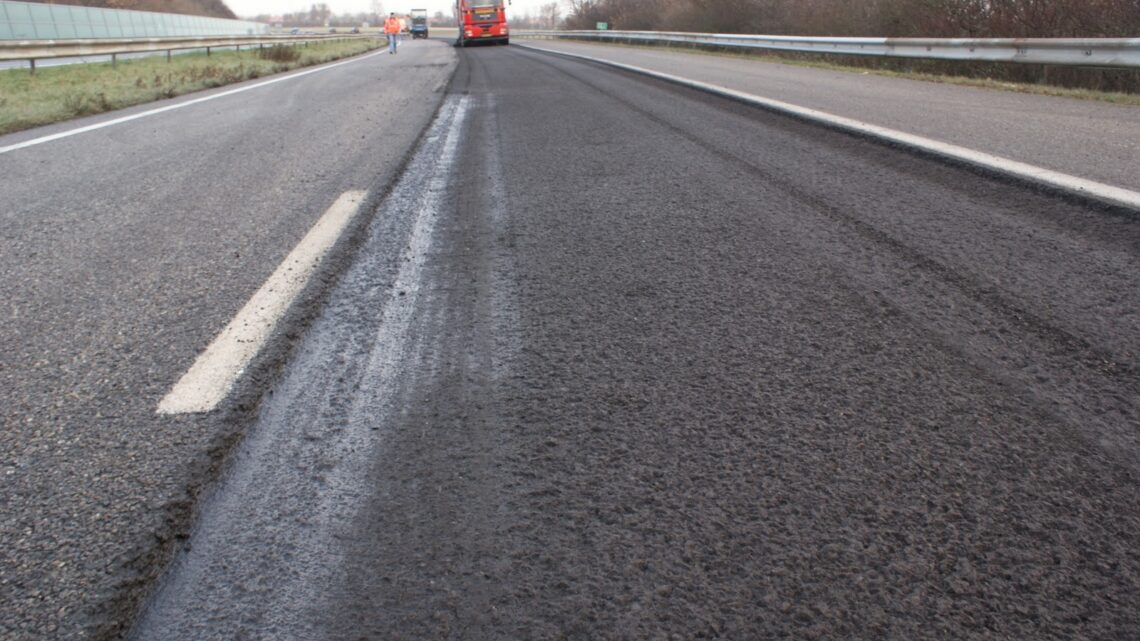
What is Self-Healing Asphalt?Benefits and Applications
27 May 2024 Off By The Engineering CommunityWhat is Self-Healing Asphalt?Benefits and Applications
The field of road construction is witnessing an exciting transformation with the introduction of self-healing asphalt, an innovative material that promises to extend the lifespan of roads, reduce maintenance costs, and enhance sustainability. This breakthrough technology is poised to address some of the most pressing challenges in infrastructure management, including pothole formation, road deterioration, and the environmental impact of frequent repairs.
What is Self-Healing Asphalt?
Self-healing asphalt is a type of road material designed to automatically repair minor cracks and damages without the need for external intervention. This innovation leverages the principles of material science and nanotechnology to incorporate healing agents within the asphalt mix. When activated by specific triggers such as heat, pressure, or sunlight, these agents mobilize to fill in cracks and restore the material’s structural integrity.
How Does Self-Healing Asphalt Work?
The functionality of self-healing asphalt is rooted in its composition. There are several approaches to creating this advanced material:
- Microcapsules with Healing Agents:
- Tiny capsules containing rejuvenating oils or other healing agents are embedded within the asphalt. When cracks form, these capsules break open, releasing their contents to flow into the cracks and bind the material back together.
- Induction Heating:
- Metallic fibers are mixed into the asphalt, enabling it to be heated using induction coils. When cracks appear, induction heating melts the asphalt slightly, allowing it to flow and seal the cracks.
- Bitumen Modification:
- Modifying the bitumen (the binding agent in asphalt) with polymers or other additives can enhance its self-healing properties. These modifications enable the bitumen to soften and flow into cracks at higher temperatures, typically during hot weather.
Benefits of Self-Healing Asphalt
- Extended Road Lifespan:
- Self-healing asphalt significantly prolongs the life of roads by continuously repairing small damages that would otherwise accumulate and lead to major deterioration. This results in smoother, safer driving surfaces over time.
- Reduced Maintenance Costs:
- By minimizing the need for frequent repairs, self-healing asphalt can substantially lower maintenance expenses. This is particularly beneficial for municipalities and governments managing extensive road networks.
- Environmental Sustainability:
- Fewer repairs mean less frequent construction activities, which in turn reduces greenhouse gas emissions and the consumption of raw materials. Additionally, some self-healing asphalt formulations use recycled materials, further enhancing sustainability.
- Improved Road Safety:
- Maintaining road integrity and preventing potholes and cracks from worsening helps reduce accidents and vehicle damage, contributing to safer transportation systems.
Current Applications and Future Potential
Self-healing asphalt is still in the experimental and early adoption stages, but several pilot projects around the world have demonstrated its potential:
- The Netherlands: Known for its innovative infrastructure, the Netherlands has implemented self-healing asphalt in several test roads. Results have shown promising improvements in road durability and reduced maintenance needs.
- China: Chinese researchers are exploring various self-healing asphalt technologies, aiming to incorporate them into the country’s extensive highway network.
- United States: Various state departments of transportation are conducting trials to evaluate the performance of self-healing asphalt under different climatic conditions and traffic loads.
As research and development continue, the cost-effectiveness and efficiency of self-healing asphalt are expected to improve, making it more accessible for widespread use. Future advancements may also enhance the healing capabilities of the material, allowing it to repair larger cracks and damages autonomously.
Challenges and Considerations
While self-healing asphalt offers numerous benefits, there are challenges to its widespread adoption:
- Initial Costs: The production and installation of self-healing asphalt are currently more expensive than traditional asphalt. However, the long-term savings from reduced maintenance can offset these initial costs.
- Performance Variability: The effectiveness of self-healing asphalt can vary based on environmental conditions, traffic loads, and the specific formulation used. Ongoing research is needed to optimize these variables for different applications.
- Public and Industry Acceptance: As with any new technology, gaining acceptance from both the public and industry stakeholders is crucial. Demonstrating the reliability and benefits of self-healing asphalt through successful pilot projects is key to driving wider adoption.
Conclusion
Self-healing asphalt represents one of the most exciting innovations in road construction, offering the potential to revolutionize how we build and maintain our roadways. By extending the lifespan of roads, reducing maintenance costs, and enhancing sustainability, this advanced material holds promise for creating more durable, cost-effective, and environmentally friendly infrastructure. As research progresses and more pilot projects showcase its benefits, self-healing asphalt could become a standard in road construction, paving the way for smarter, more resilient transportation networks.
More from my site
What is Warm Mix Asphalt (WMA) ?
Testing and Characterization of Asphalt Materials and Pavement Structures Free PDF
Asphalt Mixture Selection Free PDF
Calculation For Mixed Concrete Wood Floor Spreadsheet
Corbel Design Via The Cantilevered Beam Design Method Spreadsheet
Design Of Intze Water Tank Spreadsheet








